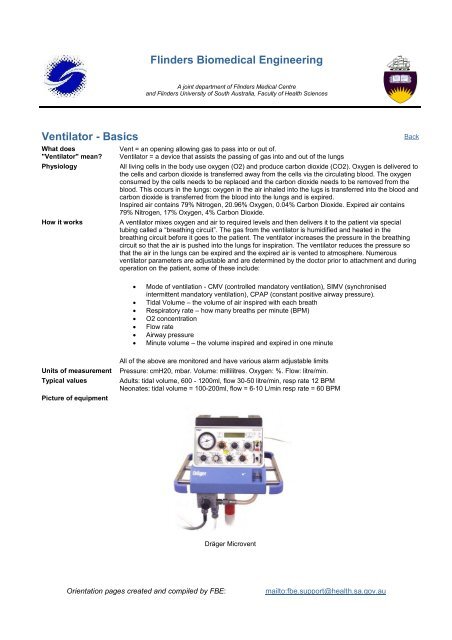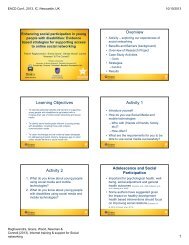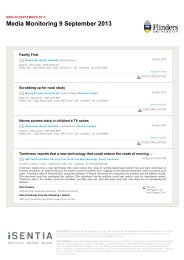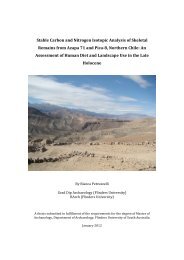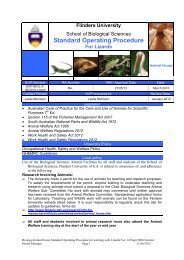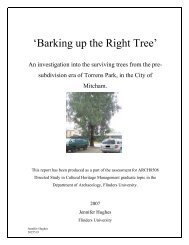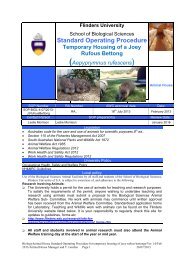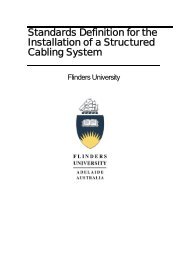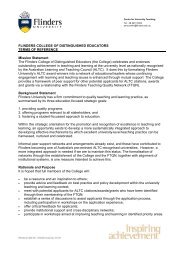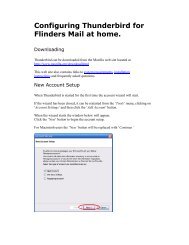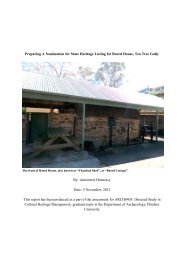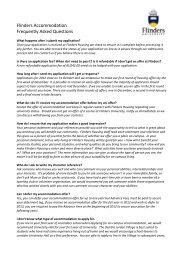Flinders Biomedical Engineering Equipment Orientation
Flinders Biomedical Engineering Equipment Orientation
Flinders Biomedical Engineering Equipment Orientation
You also want an ePaper? Increase the reach of your titles
YUMPU automatically turns print PDFs into web optimized ePapers that Google loves.
Ventilator - Basics<br />
What does<br />
"Ventilator" mean?<br />
<strong>Flinders</strong> <strong>Biomedical</strong> <strong>Engineering</strong><br />
A joint department of <strong>Flinders</strong> Medical Centre<br />
and <strong>Flinders</strong> University of South Australia, Faculty of Health Sciences<br />
Vent = an opening allowing gas to pass into or out of.<br />
Ventilator = a device that assists the passing of gas into and out of the lungs<br />
Physiology All living cells in the body use oxygen (O2) and produce carbon dioxide (CO2). Oxygen is delivered to<br />
the cells and carbon dioxide is transferred away from the cells via the circulating blood. The oxygen<br />
consumed by the cells needs to be replaced and the carbon dioxide needs to be removed from the<br />
blood. This occurs in the lungs: oxygen in the air inhaled into the lugs is transferred into the blood and<br />
carbon dioxide is transferred from the blood into the lungs and is expired.<br />
Inspired air contains 79% Nitrogen, 20.96% Oxygen, 0.04% Carbon Dioxide. Expired air contains<br />
79% Nitrogen, 17% Oxygen, 4% Carbon Dioxide.<br />
How it works A ventilator mixes oxygen and air to required levels and then delivers it to the patient via special<br />
tubing called a “breathing circuit”. The gas from the ventilator is humidified and heated in the<br />
breathing circuit before it goes to the patient. The ventilator increases the pressure in the breathing<br />
circuit so that the air is pushed into the lungs for inspiration. The ventilator reduces the pressure so<br />
that the air in the lungs can be expired and the expired air is vented to atmosphere. Numerous<br />
ventilator parameters are adjustable and are determined by the doctor prior to attachment and during<br />
operation on the patient, some of these include:<br />
• Mode of ventilation - CMV (controlled mandatory ventilation), SIMV (synchronised<br />
intermittent mandatory ventilation), CPAP (constant positive airway pressure).<br />
• Tidal Volume – the volume of air inspired with each breath<br />
• Respiratory rate – how many breaths per minute (BPM)<br />
• O2 concentration<br />
• Flow rate<br />
• Airway pressure<br />
• Minute volume – the volume inspired and expired in one minute<br />
All of the above are monitored and have various alarm adjustable limits<br />
Units of measurement Pressure: cmH20, mbar. Volume: millilitres. Oxygen: %. Flow: litre/min.<br />
Typical values Adults: tidal volume, 600 - 1200ml, flow 30-50 litre/min, resp rate 12 BPM<br />
Neonates: tidal volume = 100-200ml, flow = 6-10 L/min resp rate = 60 BPM<br />
Picture of equipment<br />
Dräger Microvent<br />
<strong>Orientation</strong> pages created and compiled by FBE: mailto:fbe.support@health.sa.gov.au<br />
Back


